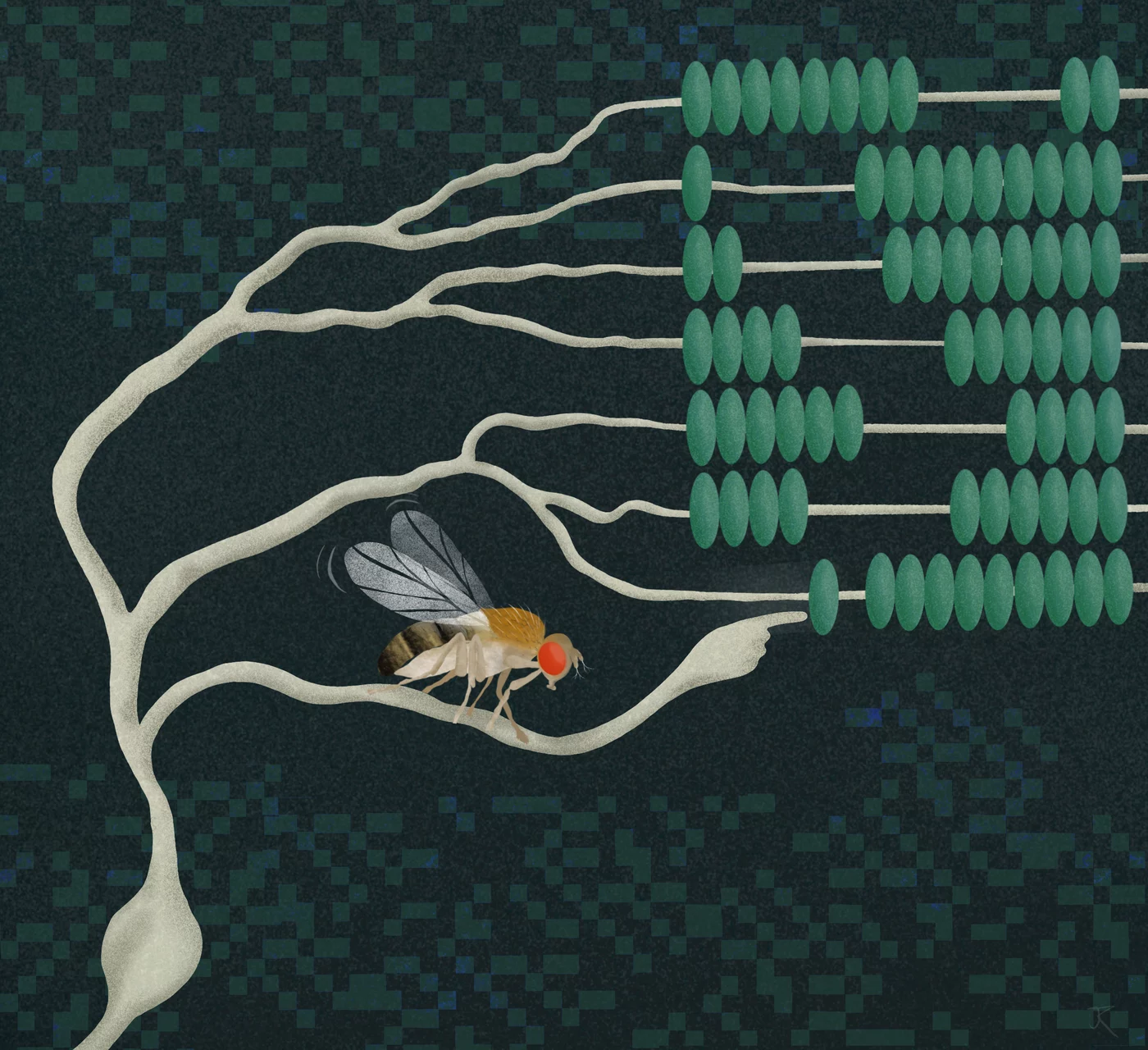The algebra of neurons

Neurons are constantly performing complex calculations to process sensory information and infer the state of the environment. For example, to localize a sound or to recognize the direction of visual motion, individual neurons are thought to multiply two signals. However, how such a computation is carried out has been a mystery for decades. Researchers at the Max Planck Institute for Biological Intelligence, in foundation (i.f.), have now discovered in fruit flies the biophysical basis that enables a specific type of neuron to multiply two incoming signals. This provides fundamental insights into the algebra of neurons – the computations that may underlie countless processes in the brain.
We easily recognize objects and the direction in which they move. The brain calculates this information based on local changes in light intensity detected by our retina. The calculations occur at the level of individual neurons. But what does it mean when neurons calculate? In a network of communicating nerve cells, each cell must calculate its outgoing signal based on a multitude of incoming signals. Certain types of signal will increase and others will reduce the outgoing signal – processes that neuroscientists refer to as 'excitation' and 'inhibition'.
